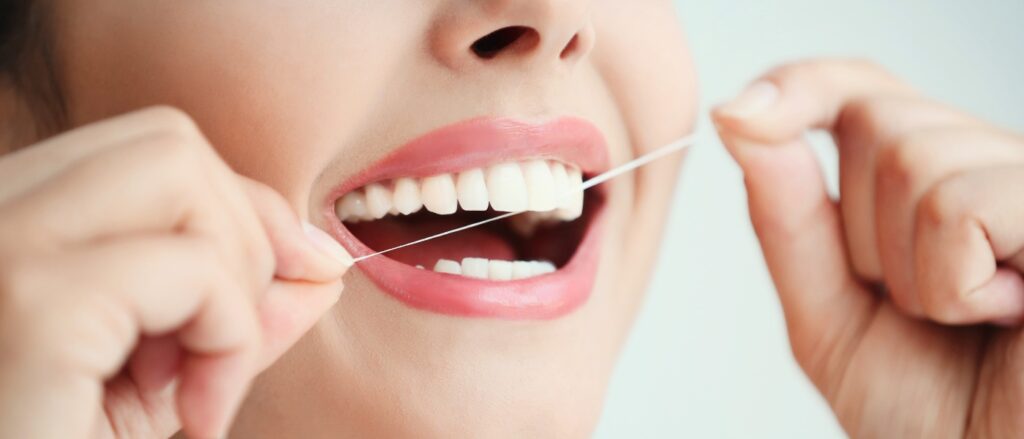Flossing: Why It’s Important and How Often Should You Do It

When it comes to maintaining excellent oral health, brushing your teeth is a well-known practice. However, there's another essential component often overlooked: flossing. Flossing is a crucial part of a comprehensive oral hygiene routine, and its importance cannot be overstated. In this comprehensive guide, we will delve into why flossing is important and how often you should incorporate it into your dental care regimen.
Why Is Flossing Important?
-
- Cleans Between Teeth: Toothbrushes can effectively clean the surfaces of your teeth, but they can't reach between your teeth. Flossing is the most effective way to remove food particles, bacteria, and plaque from these hard-to-reach areas.
- Prevents Gum Disease: Flossing helps prevent gum disease (gingivitis and periodontitis) by removing plaque and preventing the accumulation of bacteria along the gumline. Gum disease is a major cause of tooth loss in adults.
- Reduces Bad Breath: Flossing removes the food debris and bacteria that can contribute to bad breath, keeping your breath fresher.
- Prevents Cavities: Plaque buildup between teeth can lead to cavities. Flossing regularly helps reduce the risk of tooth decay.
- Protects Overall Health: Emerging research suggests a connection between oral health and systemic health. By maintaining good oral hygiene, including flossing, you may reduce the risk of health conditions such as heart disease and diabetes.
How Often Should You Floss?
Now that we understand why flossing is important, the next question is: how often should you floss? The American Dental Association (ADA) recommends flossing once a day. Here's how to make the most of your flossing routine:
-
- Choose the Right Floss: There are various types of dental floss available, including waxed, unwaxed, flavored, and wide tape. Choose the one that you find most comfortable to use, as you're more likely to stick to your daily flossing routine if you like the product.
- Proper Flossing Technique: Follow these steps for effective flossing:
-
- Break off about 18 inches of floss and wind most of it around one finger. Wind the remaining floss around the same finger on the opposite hand.
- Hold the floss tightly between your thumb and forefinger and gently slide it between your teeth. Be careful not to force it; you don't want to damage your gums.
- Curve the floss into a "C" shape around the base of each tooth and gently slide it under the gumline.
- Use a clean section of floss for each tooth to avoid transferring bacteria.
- Don't forget to floss the backside of your last molars.
-
- Consistency Is Key: The most important aspect of flossing is doing it regularly. Flossing once a day is sufficient to maintain good oral health.
- Flossing Tools: If traditional flossing is challenging for you, consider using alternative tools such as dental picks, pre-threaded flossers, or water flossers. These can make the process more comfortable and convenient.
Additional Tips for Effective Flossing:
-
- Be Gentle: Flossing should not be painful or cause bleeding. If you experience discomfort or bleeding while flossing, it may be a sign of gum disease or improper technique. Consult your dentist if this occurs regularly.
- Set a Reminder: Many people forget to floss because it's an easy step to skip. Consider setting a daily reminder on your phone or incorporating flossing into your nightly routine.
- Teach Children Early: Introduce children to flossing as soon as they have two teeth that touch. Teaching them good oral hygiene habits early in life is essential for their long-term oral health.
Common Flossing Myths:
There are several myths and misconceptions about flossing that need to be debunked:
-
- Flossing Can Cause Gaps Between Teeth: This is untrue. Flossing helps remove food particles that can get stuck between teeth, leading to better dental health.
- Flossing Can Harm Gums: Flossing done correctly should not harm your gums. In fact, it helps maintain healthy gum tissue by removing bacteria and plaque.
- Mouthwash Can Replace Flossing: While mouthwash can be a helpful addition to your oral hygiene routine, it cannot replace the physical action of flossing, which physically removes debris between teeth.
- Flossing Is Only for Food Removal: Flossing does more than remove food particles; it prevents gum disease, cavities, and bad breath.
Flossing is a crucial part of maintaining excellent oral health. It reaches places that your toothbrush can't and helps prevent gum disease, cavities, and bad breath. By flossing once a day, using proper technique, and choosing the right flossing tools for your needs, you can take significant steps toward achieving a healthy and beautiful smile. Remember, consistency is key, and a daily flossing routine is one of the best investments you can make in your oral health.
For more information or to request an appointment, please click here or call our office at 856-343-4020.
